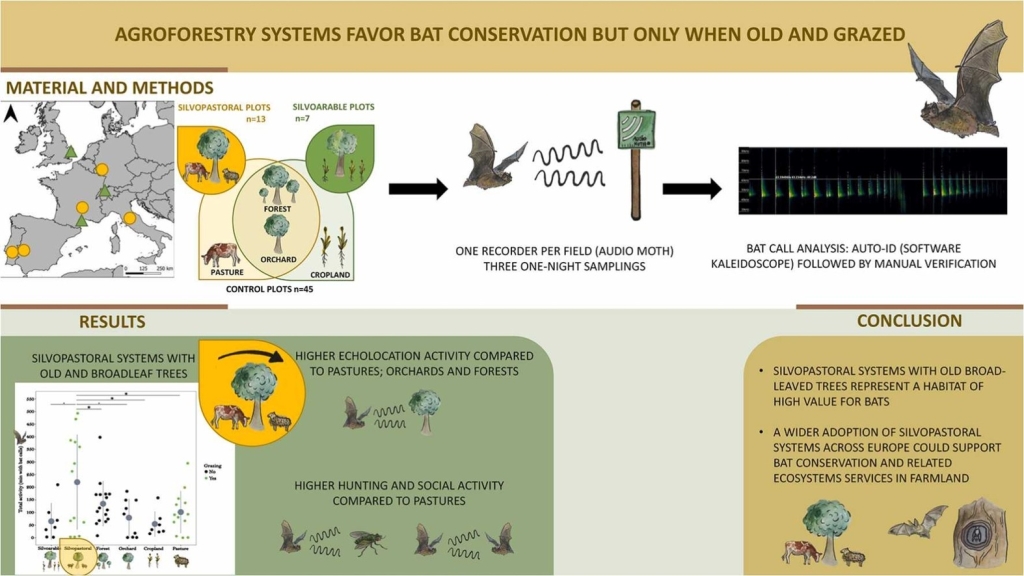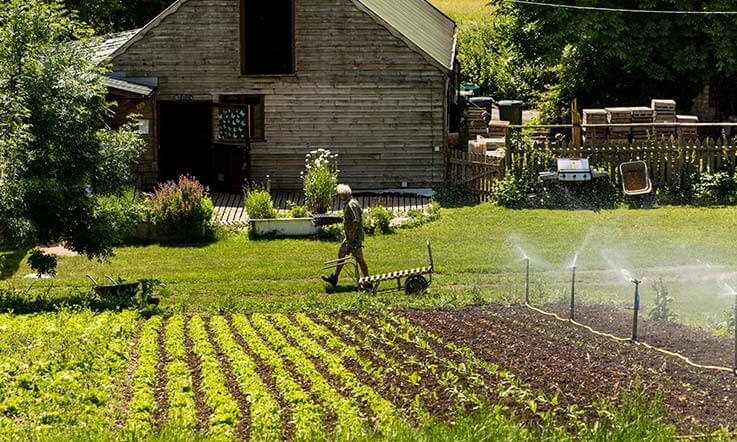A new paper has been published arising from our work in the Agromix project. It was led by our Agromix collaborators in Landau, Germany with Will Simonson and some other familiar names as co-authors. Wakelyns was one of the sites that was sampled.

Manon Edo, Entling MH, Herzog F, Noe K, Palma JHN, Seithe A, Simonson W, Smith J, Weiler A, Rösch V (2025) Agroforestry systems favor bat conservation but only when old and grazed. Global Ecology and Conservation, Volume 57, 2025, e03369,ISSN 2351-9894, https://doi.org/10.1016/j.gecco.2024.e03369
As a consequence of agricultural intensification and landscape homogenization, semi-natural elements such as hedges, woodland patches and scattered trees have been removed from many agricultural areas. The resulting habitat loss has led to the decline in the diversity and abundance of many taxa including bats, which are highly dependent on woody plants for foraging, roosting and reproduction. By combining trees with crops (silvoarable systems) or livestock (silvopastoral systems), agroforestry re-integrates structural diversity into agricultural areas that could have beneficial effects on biodiversity. In this study, bat activity was recorded with autonomous sound recorders (AudioMoth) in sixty-five agroforestry and reference sites across western Europe. Bat activity in silvopastoral systems was two times higher than in pastures and orchards and four times higher than in cropland. In addition, social calls and foraging rates of bats were highest in silvopastoral systems. By contrast, bat activity was not higher in silvoarable systems compared to control plots. Tree characteristics affected total bat activity, which was higher with increased tree age and in sites with broad-leaved compared with coniferous trees. Our results show that the combination of old broad-leaved trees and livestock is highly beneficial for bats. Thus, silvopastoral systems deserve more attention in sustainable agriculture and biodiversity conservation. However, management should also be considered and especially the implementation of silvopastoral systems with low-intensity grazing and low pesticide input should be supported.
